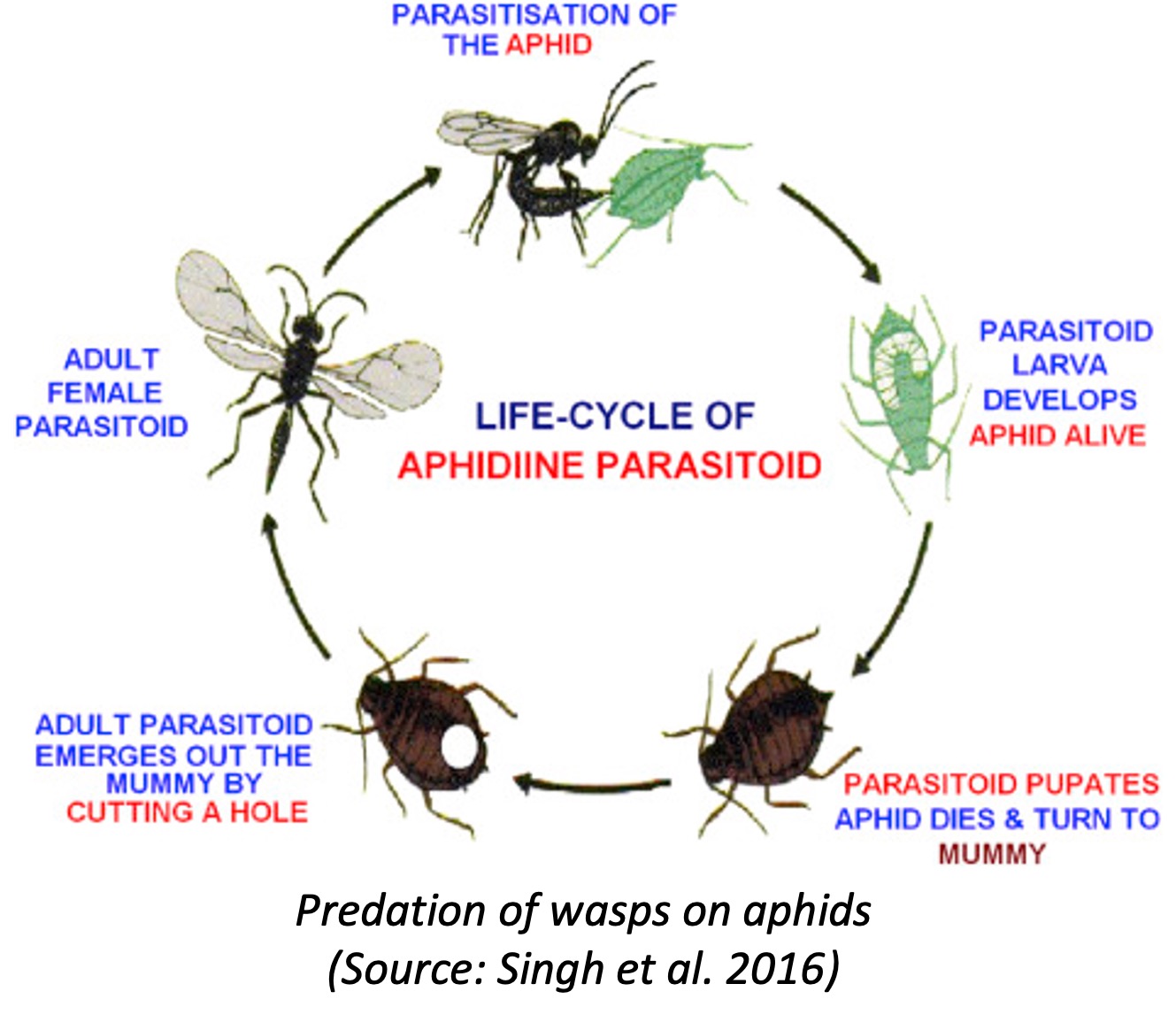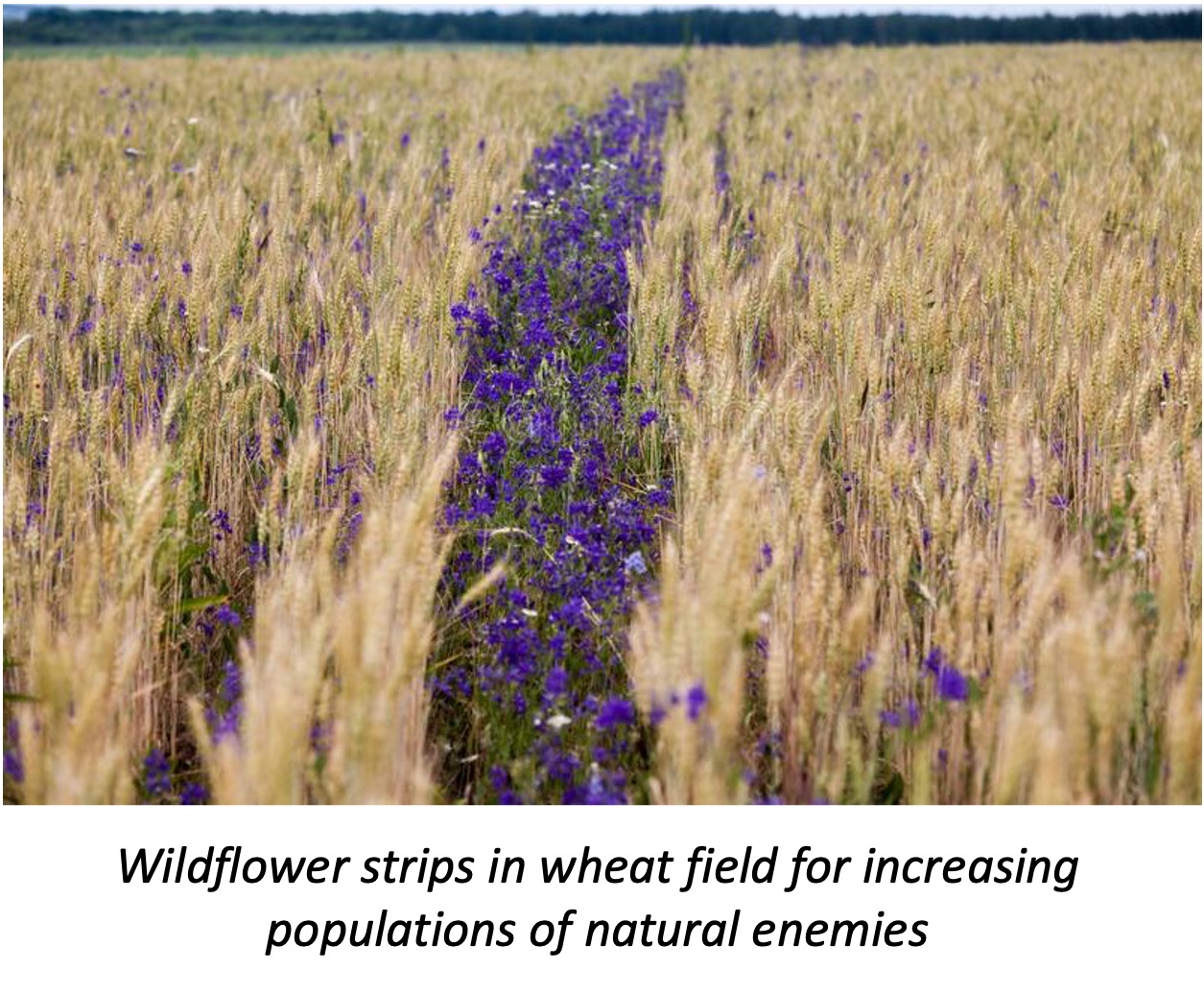Integrated Management of Insects, Diseases and Weeds in Wheat
Summary
Wheat farmers in Sub-Saharan Africa commonly apply chemical substances to prevent substantial yield losses or total crop failure of major pests like beetles, aphids, cutworms, leaf spots and crown rots because these are simple and inexpensive to use. Over time, this imposes a selective pressure on insects, microorganisms and weeds that leads to the emergence of biotypes that are resistant to active ingredients of pesticides. Failure to address this issue proactively will result in widespread outbreaks with devastating impacts on food security and farmer income such as is seen by the rapid rise of resistance to acetolactate synthase-inhibiting herbicides in broadleaf and grassy weeds that are affecting wheat crops. Modifying the use of a chemical agent or changing to another type of substance provides short-term relief but do not avoid the emergence of resistant biotypes. Frequent application of broad spectrum pesticides on farms distorts the natural control of harmful insects, diseases and weeds due to the loss of organisms that are their enemies. Integrated pest management (IPM) allows to eliminate the use of chemical agents by employing diverse biological and agronomic methods which bring about effective lasting crop protection, and do not pose dangers for food safety and the environment.
About the Solution
IPM aims to maximally harness natural control mechanisms for pests where possible and minimally use chemical pesticide substances if there is no other option. The primary focus is maintaining a well-balanced population of beneficial and harmful organisms based on current knowledge of their life cycles and interactions with the environment. IPM strategies involve carefully selected mixes of biological, mechanical/physical and cultural techniques that are tailored to local conditions and ensure the yield benefit exceeds implementation costs. A wide range of biological measures can be used that directly affect the target pest such as releases of natural predators and enemies, or sterile insects. Increasing the abundance of beneficial communities or introducing new species needs to be handled with extreme caution as it can have detrimental impacts on organisms and ecosystems that are not targeted. Mechanical/physical interventions involve equipment to scare away birds or rodents, or picking pests of plants. Cultural measures avoid that conducive conditions for pest build-up are created and include practices such as precision sowing, shifting planting dates, removing waste or diseased plants, wildflower strips and pest-resistant varieties. IPM interventions can suppress multiple pests at the same time like is the case for aphids which transmit yellow rust and stem rust in wheat crops.
Effective IPM strategies are available for many important pests of wheat crops in Sub-Saharan Africa, including insects like aphids, mites, maggots and cutworms, diseases like rusts, bacterial blights, root and crown rots, and weeds like wild oats, annual ryegrass, nut grass and chickweed. The principles of IPM can be universally implemented in rainfed and irrigated systems, lowland valleys or highland plateaus, and dry sub-humid and semi-arid climates. Mechanical/physical and cultural techniques match a very broad set of agronomic and environmental conditions, and can be easily modified to local contexts. Biological techniques suit a narrow range of geographies that is delimited by the physiological traits of beneficial organisms and composition of native communities.
Releases of beneficial organisms follow two approaches; ‘inoculative’ where a limited number gets introduced and builds up over time, or ‘inundative’ where mass rearing takes place and large numbers are dispersed. The inoculative technique is suitable for long term interventions, whereas the inundative technique immediately results in suppression of pests as required in case of severe outbreaks. Reproduction and survival of natural predators and enemies can be enhanced by providing alternative hosts/preys or favourable nesting and feeding sites. The sterile insect method effectively decreases reproduction rates of pest by releasing infecund males that rival fertile males and cause unsuccessful breeding of females. A key cultural technique for controlling aphids in wheat crops is to shift the time of planting when conditions for not favourable for rapid multiplication of the pest. Rotations wheat with rice, chickpea, pea, cotton and other crops is the cornerstone of integrated weed management. Increasing crop density and decreasing row spacing is effective to suppress the growth of weeds and seed output by weeds. Mass trapping techniques use pheromones and are appropriate for controlling whiteflies and thrips.
Implementing IPM strategies begins with identifying the type and number of harmful and beneficial organisms on a farm, and establishing critical thresholds in the community structure when economic injury take place. Monitoring pests can be done with simple tools like traps, handheld magnifying glasses and binocular microscopes, or with advanced high resolution cameras fitted onto drones that allow rapid surveillance of large areas. Inspections of weeds have to be performed between emergence and tillering stages when annual broadleaf weeds are less than 1.5 inches (early season), and during or after the harvest (post-season). Insect and disease surveys are carried out simultaneously and must be repeated at different growth stage from tillering over stem extension up to flowering. Software tools offer an easy means for data gathering and analysis which allows to track the development of pests and natural enemies, and improve IPM strategies. Once the threshold for populations of harmful and beneficial organisms has been reached then prescribed biological, mechanical/physical and cultural measures have to actioned.
Commercialization
Commercially available
Solution Images
Institutions




